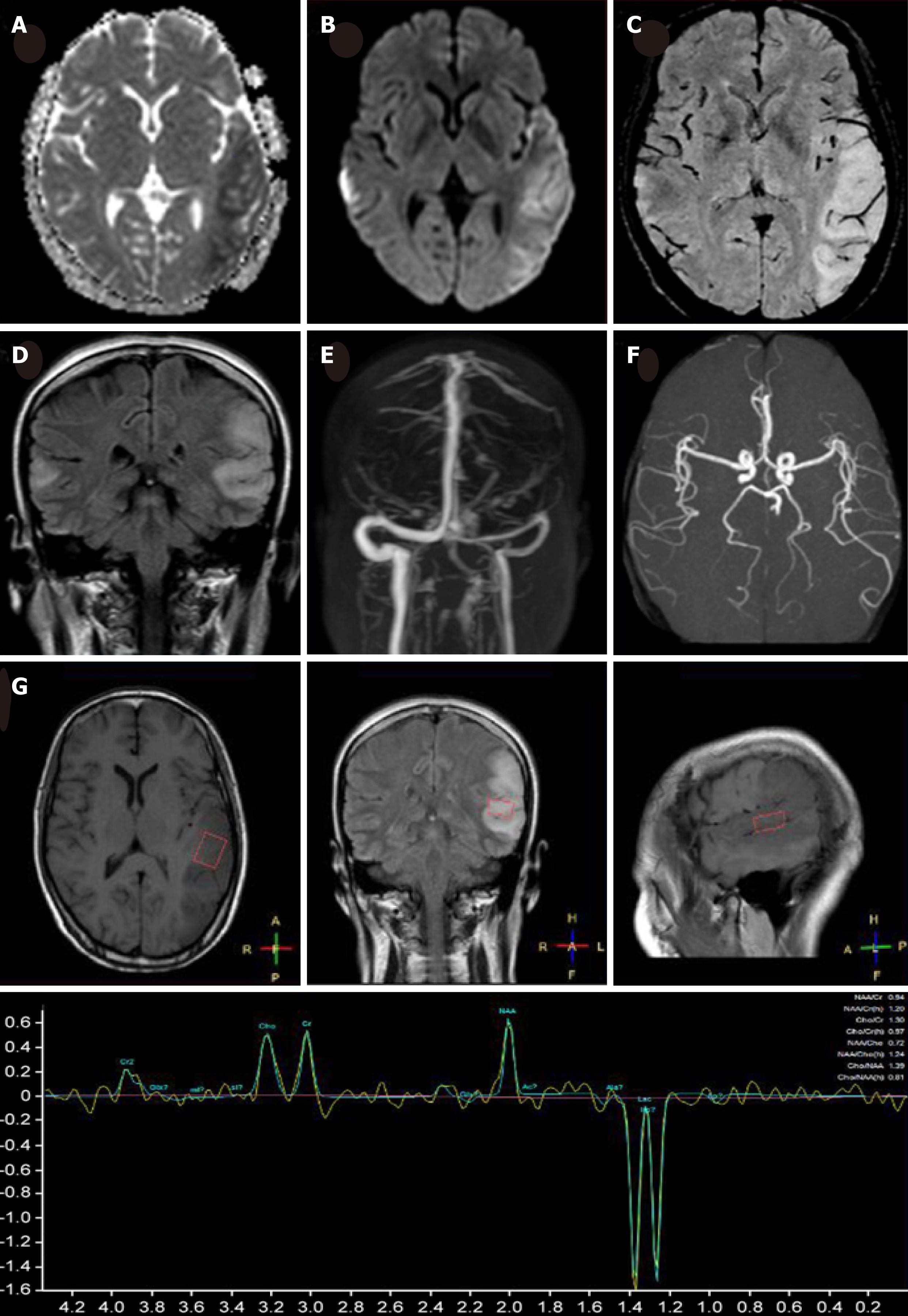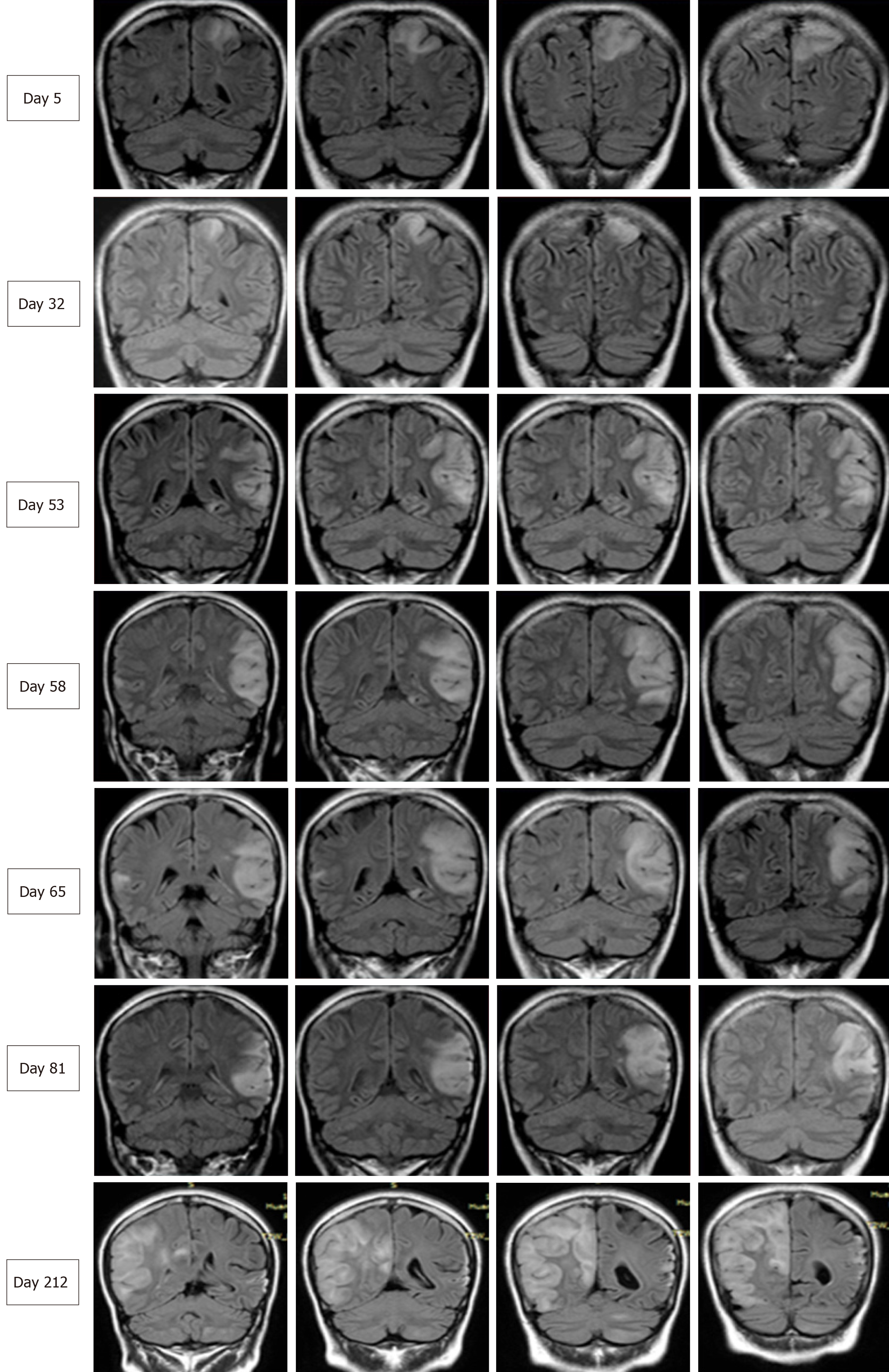Copyright
©The Author(s) 2019.
World J Clin Cases. May 6, 2019; 7(9): 1066-1072
Published online May 6, 2019. doi: 10.12998/wjcc.v7.i9.1066
Published online May 6, 2019. doi: 10.12998/wjcc.v7.i9.1066
Figure 1 Magnetic resonance imaging of the present patient during her second hospitalization.
Axial brain magnetic resonance imaging showed marked hyperintensity on diffusion-weighted imaging (A), slight hypointensity on apparent diffusion coefficient maps (B) in the bilateral temporal cortical regions, predominantly on the left side, with hyperintensity in the corresponding region on coronal fluid-attenuated inversion recovery (D). No hypointensity of dilated intrasulcal venous structures was observed on susceptibility weighted imaging (C), and no abnormalities were observed on magnetic resonance angiography (E) or magnetic resonance venography (F). Magnetic resonance spectroscopy revealed an inverted lactate (Lac) doublet in the subcortical region of the left temporal lesion (G).
Figure 2 Serial brain images covering three recurrent stroke-like episodes in the present patient over a 7-mo period.
Four representative coronal slices were serially shown in chronological order. Fluid-attenuated inversion recovery images on days 5, 32, 58, 65, 81, and 212 revealed hyperintensity signals appearing recurrently in various cortical and subcortical areas, mainly in the parietal and temporal lobes, and the progressive development of cortical atrophy.
- Citation: Fu XL, Zhou XX, Shi Z, Zheng WC. Adult-onset mitochondrial encephalopathy in association with the MT-ND3 T10158C mutation exhibits unique characteristics: A case report. World J Clin Cases 2019; 7(9): 1066-1072
- URL: https://www.wjgnet.com/2307-8960/full/v7/i9/1066.htm
- DOI: https://dx.doi.org/10.12998/wjcc.v7.i9.1066










